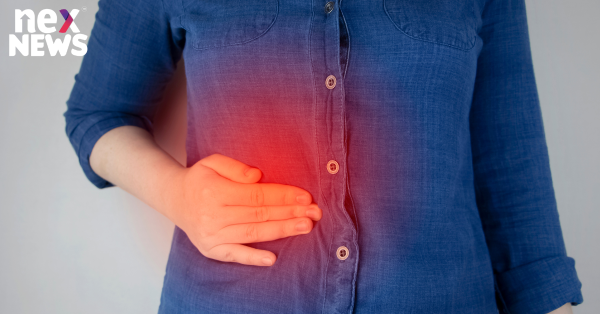Have you ever experienced persistent discomfort or pain in the right upper quadrant of your abdomen, just below the ribs? This article explores the causes, symptoms, and treatment options for right upper quadrant pain. Understanding the underlying conditions and seeking appropriate medical attention is crucial for proper diagnosis and effective management.
Anatomy of the Right Upper Quadrant
- To comprehend the potential sources of right upper quadrant pain, it's essential to understand the anatomical structures located in this area. The right upper quadrant houses several vital organs and structures, including the liver, gallbladder, pancreas, kidneys, intestines, and the surrounding muscles and bones.
- The liver, the largest internal organ, performs numerous functions vital to overall health. Positioned primarily in the right upper quadrant, it plays a crucial role in digestion, detoxification, and the production of essential substances such as bile.
- Adjacent to the liver lies the gallbladder, which stores bile produced by the liver until needed for fat digestion. The pancreas, positioned behind the stomach, secretes digestive enzymes and hormones like insulin.
- The kidneys, although located deeper within the abdomen, can also cause right upper quadrant pain if affected by certain conditions. The intestines, which are part of the gastrointestinal system, process food and absorb nutrients.
- Lastly, the right upper quadrant is supported by muscles and bones, including the ribs, which protect the underlying organs.
Common Causes of Right Upper Quadrant Pain
Right upper quadrant pain can arise from various conditions affecting the organs and structures in this region. Let's explore some common causes:
Liver Diseases
Liver diseases, such as hepatitis, fatty liver disease, and liver cirrhosis, can result in right upper quadrant pain. Hepatitis refers to the inflammation of the liver, which can be caused by viral infections, alcohol abuse, or certain medications. Fatty liver disease occurs due to the accumulation of excess fat in the liver cells, while liver cirrhosis involves irreversible scarring of the liver tissue.
Gallbladder Disorders
The presence of gallstones or inflammation of the gallbladder, known as cholecystitis, can lead to right upper quadrant pain. Gallstones are solid deposits that form in the gallbladder or bile ducts, causing discomfort and potentially obstructing the flow of bile.
Pancreatic Conditions
Pancreatitis, an inflammation of the pancreas, can cause right upper quadrant pain. It can be triggered by alcohol abuse, gallstones, certain medications, or infections. In more severe cases, pancreatic cancer, although relatively rare, may also manifest as right upper quadrant pain.
Kidney Issues
Conditions affecting the kidneys, such as kidney stones or pyelonephritis (kidney infection), can radiate pain to the right upper quadrant. Kidney stones are solid masses that form within the kidneys and can cause sharp, intense pain as they move through the urinary tract. Pyelonephritis refers to a bacterial infection of the kidneys that causes localized pain and discomfort.
Intestinal Problems
Gastrointestinal reflux disease (GERD), a condition characterized by the backward flow of stomach acid into the esophagus, can cause right upper quadrant pain. Irritable bowel syndrome (IBS), a common gastrointestinal disorder, may also lead to discomfort in this region.
Musculoskeletal Causes
Injuries or conditions affecting the muscles and bones in the right upper quadrant can result in pain. Rib fractures, often caused by trauma or repetitive stress, can lead to localized pain that worsens with movement. Muscle strains in the abdominal or back muscles can also cause discomfort in this area.
Symptoms Associated with Right Upper Quadrant Pain
Right upper quadrant pain may be accompanied by additional symptoms, depending on the underlying cause. Some common symptoms include:
- Nausea and vomiting: Digestive disturbances often accompany right upper quadrant pain, leading to feelings of nausea and occasional vomiting.
- Jaundice: Liver conditions that cause right upper quadrant pain may also result in yellowing of the skin and eyes, known as jaundice.
- Fever: Infections or inflammations affecting the organs in the right upper quadrant can lead to fever.
- Abdominal bloating: Some conditions, such as liver cirrhosis or intestinal disorders, may cause abdominal bloating and discomfort.
- Changes in bowel movements: Intestinal problems, like GERD or IBS, can cause alterations in bowel movements, including diarrhea or constipation.
- Back or shoulder pain: Pain originating from the right upper quadrant may radiate to the back or shoulder area, causing additional discomfort.
It's important to note that the presence of these symptoms alongside right upper quadrant pain may indicate a more serious condition and should prompt medical attention.
When to Seek Medical Attention
While occasional mild discomfort in the right upper quadrant may not be cause for alarm, certain situations warrant prompt medical attention:
- Acute and severe pain: If the pain is sudden, intense, and interfering with daily activities, it is essential to seek immediate medical assistance.
- Symptoms persisting for more than 24 hours: If the right upper quadrant pain persists for an extended period or worsens over time, medical evaluation is recommended.
- Presence of additional concerning symptoms: Symptoms like high fever, severe jaundice, unexplained weight loss, or blood in vomit or stool require urgent medical attention.
Diagnosis of Right Upper Quadrant Pain
When assessing right upper quadrant pain, healthcare professionals employ various diagnostic methods to identify the underlying cause. These may include:
- Medical history and physical examination: The doctor will inquire about your symptoms, medical history, and perform a thorough physical examination, including palpation of the abdomen.
- Blood tests: Blood samples may be analyzed to assess liver function, check for signs of infection or inflammation, and evaluate other organ parameters.
- Imaging tests: Ultrasound, CT scan, or MRI imaging may be conducted to visualize the organs and identify any abnormalities, such as gallstones or liver damage.
- Endoscopic procedures: In certain cases, an endoscopy or ERCP (endoscopic retrograde cholangiopancreatography) may be performed to directly visualize the gastrointestinal tract or obtain tissue samples for further analysis.
Based on the diagnostic findings, a healthcare professional can determine the most appropriate treatment approach.
Treatment Options
The treatment of right upper quadrant pain depends on the underlying cause. Some common treatment options include:
- Medications: Infections, inflammations, or conditions like GERD may be managed with medications such as antibiotics, anti-inflammatory drugs, or acid-suppressing agents.
- Surgical interventions: Conditions like gallstones or pancreatic cancer may require surgical intervention to remove obstructions or tumors.
- Lifestyle changes: Adopting a healthy diet, limiting alcohol consumption, maintaining a healthy weight, and managing stress can help alleviate symptoms associated with right upper quadrant pain.
- Alternative therapies: Complementary approaches like acupuncture, herbal remedies, or chiropractic care may provide relief for certain individuals, but their efficacy varies, and consultation with a healthcare professional is advised.
Prevention and Self-Care
While not all causes of right upper quadrant pain are preventable, incorporating certain habits into your lifestyle can promote overall abdominal health and minimize the risk of certain conditions. Consider the following preventive measures:
- Maintain a healthy diet and weight: Consuming a balanced diet rich in fruits, vegetables, whole grains, and lean proteins can support optimal organ function. Additionally, maintaining a healthy weight reduces the risk of developing conditions such as fatty liver disease or gallstones.
- Engage in regular exercise: Regular physical activity promotes overall well-being and helps prevent obesity, which can contribute to various health issues.
- Stay hydrated: Drinking an adequate amount of water each day supports digestion, kidney function, and overall hydration.
- Manage stress: Chronic stress can have a negative impact on digestive health. Employ stress management techniques such as meditation, deep breathing exercises, or engaging in hobbies you enjoy.
Remember, these preventive measures should be part of a holistic approach to maintaining overall health and well-being.
Conclusion
Right upper quadrant pain under the ribs can arise from a range of causes, including liver diseases, gallbladder disorders, pancreatic conditions, kidney issues, intestinal problems, and musculoskeletal causes. Understanding the underlying cause of the pain is crucial for appropriate diagnosis and treatment. If you experience persistent or severe right upper quadrant pain, it's important to seek medical attention to determine the cause and receive proper care.

